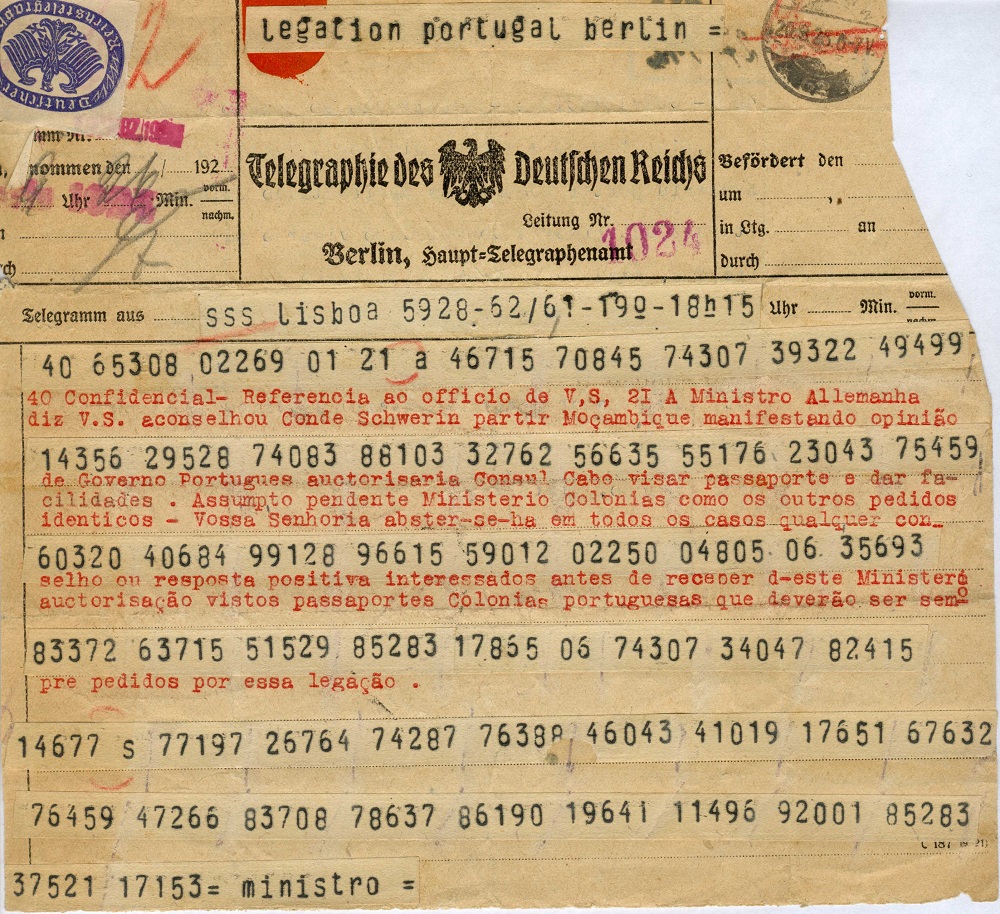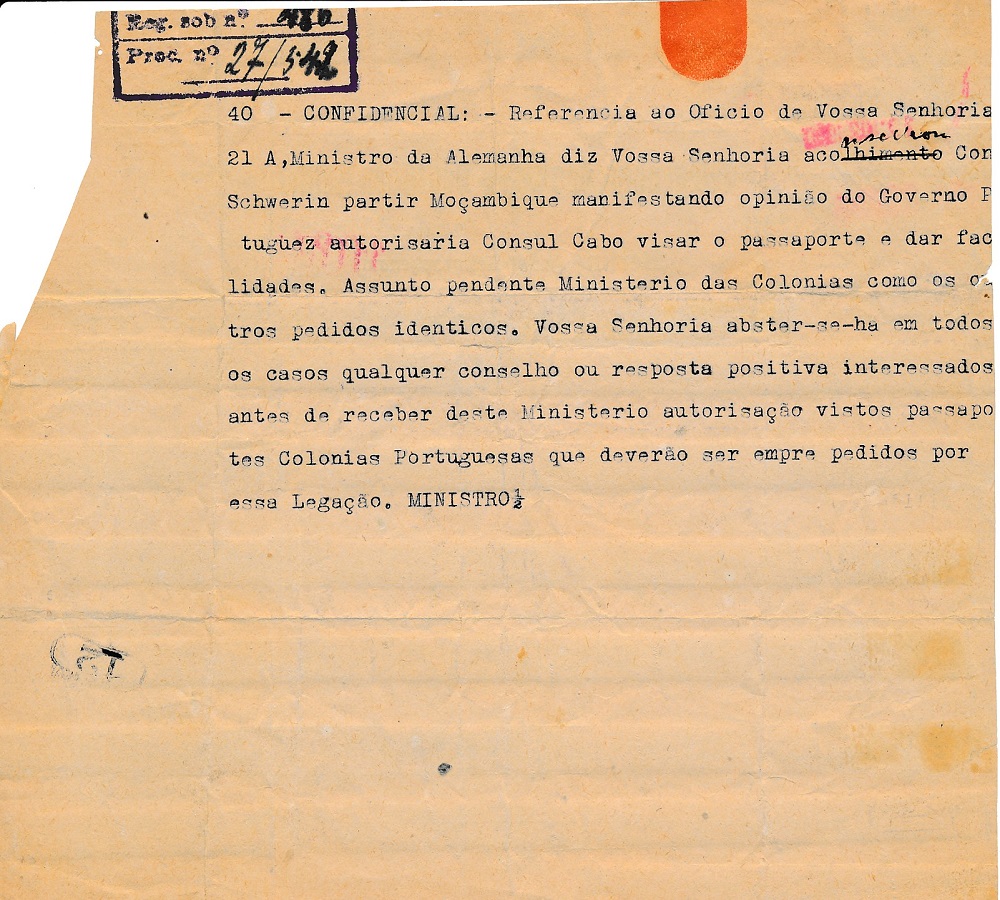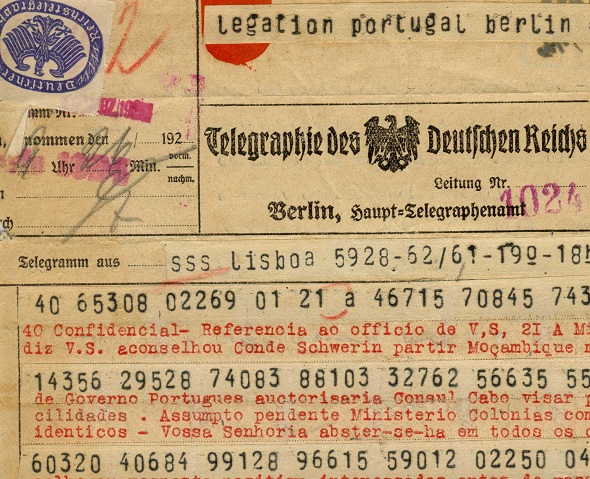In 1921 an encrypted telegram was sent from the Portuguese embassy in Berlin to Lisbon. The plaintext is known, but the encryption method used isn’t. Can a reader help?
Blog reader and spy gadgets collector Detlev Vreisleben has provided me an interesting item: an encrypted telegram sent from the Portuguese embassy in Berlin to the Porguese capital, Lisbon. Detlev received this telegram 60 years ago from a school mate.

If I’m not wrong, the string “192” in the upper left part of the form is complemented with a one, which means that the telegram was sent in 1921. Here’s the rear-side of the sheet:

As can be seen, the plaintext of the encrypted message is written in red letters below the ciphertext. As expected, the language of the telegram is Portuguese. As I don’t speak Portuguese, I can’t translate this message, but at least I recognize words like “colonies” and “Mozambique” (in fact, Mozambique was a Portuguese colony).
Now, that the plaintext is known, the main question about this cryptogram is: which encryption method was used? There are three reasons why I am almost sure that is was a code based on a codebook:
- Codebook codes were quite popular in the diplomacy of the 1920s.
- Encryption machines like the Enigma were not yet in use in 1921.
- Most, but not all of the number blocks in the cryptogram have an identical length. This is typical for a code.
Assuming that a code was used, there are two open questions: first, which codebook was used; and second, was it used in a direct way or was an additional encryption (e.g., addition of the current day to every codegroup) performed.
Sixty years after Detlev received this telegram, he would be very pleased to have these questions answered. Can a reader help?
Follow @KlausSchmeh
Further reading: Who can break these encrypted telegrams from 1876?
Linkedin: https://www.linkedin.com/groups/13501820
Facebook: https://www.facebook.com/groups/763282653806483/



Kommentare (7)